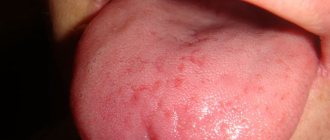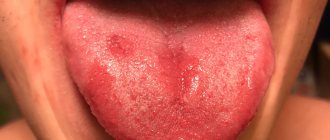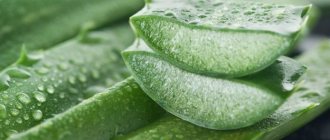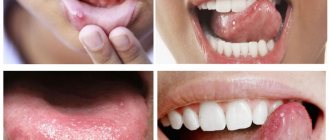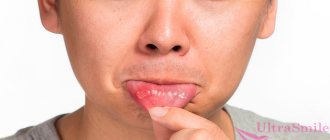Signs of normality and pathology
The tongue is a muscular organ that is responsible not only for our speech and perception of the taste of food, but also often signals problems occurring in the body. In its normal state it is pinkish, the tissue structure is homogeneous. The organ can be covered with a whitish coating (most often in the morning), or colored deposits from food: both types are easily removed with a brush or scraper.
In normal condition, the tongue is pinkish
If spots and blisters of different colors and in different quantities appear on the tongue, this indicates a negative impact on the tissue of external factors, or the occurrence of pathological processes and various diseases in the body1. In this case, the neoplasms can itch, burn, hurt, itch, burst, become covered with a crust and a foul-smelling coating.
We will analyze all the main reasons further.
Dental problems
Wondering how blisters on the tongue are related to dental pathologies? Incorrect bite, the presence of chipped and damaged teeth, poorly fitted orthopedic and orthodontic structures can lead to periodic and systematic injury to the muscular organ and its biting. In most cases, after an injury, a single blister forms on the tongue, which, depending on the depth and severity of the injury, sometimes becomes filled with blood.
In fact, dental pathologies most often lead to tongue injuries in adults, when red, bleeding wounds and blisters appear on the tissue. But in children, the appearance of rashes on a muscle organ is often caused by a restless lifestyle: while playing, children fall, hit themselves, and can bite their tongue until it bleeds.
After an injury, a blister may form on the tongue, which is sometimes filled with blood.
Sometimes it’s not a traumatic factor at all. Formations on the tongue can appear under the influence of pathogenic bacteria that live in plaque, which is abundantly deposited on the surface of the teeth and gums. This happens if a person does poor oral hygiene and only for show, does not treat in a timely manner and causes caries, pulpitis, gingivitis, and periodontitis.
“One time I began to notice that some kind of bubble with blood inside came out on my tongue. It looked like something had damaged the tissue. I went to the dentist, he said: yes, there are problems in my mouth. I corrected all the flaws and restored some of my teeth. But this infection did not go away, but seemed to begin to grow even more. Then, reluctantly, I went to a therapist, who, after an examination, urgently sent me to an oncologist. He diagnosed him with hemangioma. It’s good that this infection turned out to be benign, it was removed, and the prognosis is favorable. Doctors said it could have been caused by simply biting the tongue while the teeth were in poor condition, even before going to the dentist.”
Evi, review from woman.ru
Thermal and chemical burns
Pathology may indicate that a person has consumed too hot foods and drinks. The problem often occurs among smokers, as cigarette smoke can lead to irritation and damage to delicate tissues.
A burn can be caused by eating sour and spicy foods, after which a feeling of “on edge” often appears on the tongue. The problem is also caused by the independent use of various drugs, as well as aggressive agents in folk recipes for the treatment of diseases of the oral cavity (hydrogen peroxide, iodine, potassium permanganate, garlic, alcohol).
A blister may occur as a result of a burn.
As a rule, in such situations, the very tip of the tongue becomes blistered.
Treatment of allergic stomatitis in adults
If the dentist confirms the diagnosis, he first prescribes complex therapy. It is important not only to eliminate the painful external manifestations of the disease, but also to adjust drug treatment, change the patient’s lifestyle and, if necessary, discontinue medications that caused irritation.
Folk remedies are excellent aids in treating the disease, but using herbal infusions alone will not completely get rid of the disease. The main thing is to determine the cause of the allergy and eliminate it as soon as possible.
The main directions in the treatment of stomatitis are:
- identification and elimination of allergens;
- selection of suitable orthopedic structures (if an allergy to them is identified);
- replacement of low-quality fillings;
- selection of softer and more gentle medications;
- taking antihistamines and antiallergic drugs;
- use of local antiseptics and painkillers;
- disinfection of mucous membranes by rinsing in order to reduce the risk of infection spreading through the bloodstream throughout the body;
- taking analgesics and anti-inflammatory drugs.
Treatment of allergic stomatitis necessarily includes a hypoallergenic diet. In order for the aphthae to heal as soon as possible, and the patient no longer suffers from painful sensations in the oral cavity, the following should be excluded from the diet during treatment:
- sour, spicy and salty foods;
- citrus;
- fried foods;
- peppered dishes.
During treatment, it is recommended to eat soft foods, such as purees or soups. It is important not to injure the affected and swollen mucosa, so that the wounds heal as soon as possible and the swollen mucosa is not injured.
Additional treatment
As prescribed by the dentist and allergist, the patient can use various herbal decoctions and healing oils as additional treatment. The most effective recipes are:
- Aloe juice. The juice of the plant perfectly relieves inflammation, heals ulcers and wounds. You can rinse your mouth with the fresh juice, or you can chew the pulp of the fleshy leaf, peeled.
- Sea buckthorn oil . This oil can treat stomatitis of any form, including allergic ones. You can prepare the oil yourself or buy it at a pharmacy. To supplement the treatment, it is enough to lubricate the affected tissues several times a day. Sea buckthorn will heal wounds, soften the mucous membrane and reduce inflammation.
- Propolis . This beekeeping product perfectly relieves inflammation and heals ulcers and wounds, and also perfectly disinfects the mucous membrane. To treat stomatitis, it is enough to dilute a pharmaceutical tincture of propolis in water in a ratio of 1:10 and rinse your mouth with it.
- Chamomile infusion has excellent anti-inflammatory and wound healing properties. To treat the oral cavity, just pour 2 tablespoons of flowers into a thermos, pour 1 liter of boiling water into them and let it brew for 45 minutes. It is recommended to rinse your mouth with filtered infusion 3-4 times a day. Instead of chamomile, you can use an infusion of sage or calendula, and also prepare a mix, taking a teaspoon of each herb.
Candidal stomatitis
Many are accustomed to thinking that stomatitis caused by the Candida fungus virus makes itself felt only through ulcers and rashes that appear on the gums and palate. But in fact, its main symptom is a dense whitish or grayish coating of curd consistency on the tongue. If you try to remove such plaque, you will find blisters underneath that itch, hurt, and bleed. As a rule, small blisters are found around the perimeter of the tongue.
The photo shows candidal stomatitis
Often the disease is provoked not only by weakened immunity, dysbiosis and long-term use of antibiotics, but also by the presence of advanced dental pathologies and lack of proper oral hygiene.
Herpes virus
A scattering of small blisters on the tongue (in any area) can also signal the development of a herpetic infection. In this case, the neoplasms look like transparent blisters filled with fluid or pus. A few days after their appearance, such blisters burst, and their contents enter the oral cavity and contribute to the spread of infection to healthy tissues. Very painful ulcers appear at the site of the formations, causing discomfort while eating food.
Pathology may be herpes
Diagnostics
The diagnosis of “allergic stomatitis” is made by a dentist based on an examination of the oral cavity and questioning the patient about underlying diseases and medication use. The dentist clarifies the clinical picture of the disease.
The doctor must conduct a comprehensive examination and diagnosis:
- removable and fixed prostheses;
- braces;
- filling
To clarify the clinical picture of the disease, the specialist refers the patient for a comprehensive blood and urine test and an immunogram to assess the state of the immune system. If necessary, the doctor sends the patient for the following studies:
- determination of the acidity level and composition of saliva;
- identification of the activity of enzymes contained in saliva;
- leukopenic test;
- provocative tests with removal and subsequent installation of prostheses.
An integrated approach to diagnosing allergic stomatitis will allow you to quickly find out the cause of the negative reaction, eliminate it and begin effective treatment.
Allergic dermatitis
When small blisters appear at the root of the tongue, they are red in color and itch very much, this usually indicates the development of an allergic reaction to food, personal hygiene products (inappropriate brush, mouthwash), and medications.
The photo shows an allergy on the root of the tongue
In such conditions, the muscular organ swells, and the lymph nodes become slightly swollen. In advanced stages, cracks, crusts and erosions can form, and rashes can appear not only in the mouth, but also around the lips and even on the face.
Upper respiratory tract diseases
If red round blisters appear on the tongue closer to the throat, the throat itself swells, itches and becomes inflamed, the body temperature begins to rise, the breath becomes foul, and the person cannot eat without pain, then based on these symptoms one can suspect a sore throat and pharyngitis. With pharyngitis, the voice “sits down” and it becomes very difficult to talk.
Throat diseases can cause pathology
A similar symptom is recorded in the following conditions: syphilis, tuberculosis, HIV, oncology, vitamin deficiency, diabetes mellitus, pemphigus, angisarcoma.
Infectious pathologies
Almost all children aged 3-7 years get chickenpox, during which you can easily find blisters not only on the body, but also in the mouth, usually located at the root of the tongue, as well as rashes closer to the throat, filled with a yellowish liquid. The disease can in rare cases be found in adults, but the older generation suffers it much more severely, almost always with high body temperature and severe malaise.
With chickenpox, pimples can be not only on the body, but also on the tongue
There is another childhood pathology - scarlet fever. This disease manifests itself in almost the same way as chickenpox, but it also causes swelling of the larynx.
special instructions
In order to exclude the addition of a secondary infection and prevent diseases from penetrating deeper into the larynx, it is prohibited:
- treat yourself without consulting a doctor;
- scratch the growths, touch them with your fingers;
- brush your teeth more than 2 times a day;
- talk a lot (with active articulation there is a danger of opening tumors on the tongue of both the child and the adult, which will lead to the development of ulcers);
- smoke, drink alcohol;
- eat citrus fruits, salty foods, hot seasonings.
Close contacts are also not recommended (to avoid infecting loved ones).
How you can help yourself and others
So, you or your child have blisters on the root of the tongue, closer to the throat, or in other areas of the muscle organ. Confused about what this means and how to proceed? We'll tell you.
Don't leave the problem unattended
First, identify the accompanying symptoms. If the pathology is accompanied by an increase in body temperature, severe pain, inability to eat food, or general weakness, then you need to call a general practitioner. If there is no fever and the blisters persist for longer than 2-5 days, it is important to visit a specialist yourself. If the rashes are systematic (if they are not one-time, but appear at certain intervals again and again), it is better to visit the dentist, because often the problem indicates an incorrect bite and others dental pathologies.
Until you have consulted a doctor, be sure to treat damaged tissue
You can use classic and, most importantly, time-tested disinfectants: “Chlorhexidine”, “Furacilin”. For this purpose, children and pregnant women are recommended to use Miramistin, a decoction of chamomile, and a soda solution is also suitable. This will help relieve inflammation and soreness, reduce the risk of infection and spread to healthy tissue, and speed up the healing process.
Rinsing with disinfectants will help in treatment
If a muscle organ is sore, it is allowed to take painkillers and non-steroidal anti-inflammatory drugs from a home medicine cabinet. For example, Nurofen, Ibuprofen.
You can not only rinse your mouth with the products listed, but also treat the inflamed area with sprays like Hexoral, Tantum Verde, and Lugol. Especially if the blisters are located closer to the throat. The listed drugs will not only help relieve inflammation, but will also have an analgesic effect.
It is important to thoroughly clean the oral cavity and the tongue itself due to plaque
By removing food debris from your mouth, you deprive pathogenic bacteria of a favorable environment for reproduction and thereby reduce the likelihood of developing complications. But the effect on the muscular organ must be gentle and careful. You should not rub or scrape your tongue or actively press on it, as this can cause irritation and damage the tissue even more.
Don't brush your tongue too hard or too thoroughly
Under no circumstances should you touch the rash with your hands or foreign objects, comb it, or try to open it or squeeze it out yourself.
It is necessary to exclude some dishes and drinks from the menu
Pain and itching can become even worse if you consume citrus fruits, salty foods and spicy seasonings, excessively hot and carbonated drinks, whole hard vegetables and fruits.
During the period until the disease has completely subsided, it is recommended to drink plenty of fluids, which helps to increase the production of saliva, which is an excellent natural antiseptic.
Stop using common things
This should be done if you suspect viral or fungal diseases that cause blisters on the tongue. Otherwise, your loved ones and those closest to you, with whom you share a towel, dishes, cosmetics, and cutlery, may contract the infection.
Remember that you can only talk about home treatment for a blister if it is not a specific symptom of one of the diseases.
Notice
: Undefined variable: post_id in
/home/c/ch75405/public_html/wp-content/themes/UltraSmile/single-item.php
on line
45 Notice
: Undefined variable: full in
/home/c/ch75405/public_html/wp-content /themes/UltraSmile/single-item.php
on line
46
Rate this article:
( 5 ratings, average: 4.20 out of 5)
language
- Lutskaya I.K. Systematic and independent diseases of the tongue. // Medical news. – 2015.
Expert “To eliminate the factor that causes the appearance of traumatic blisters on the mucous membrane of the tongue, the patient may have to undergo orthodontic treatment, think about prosthetics or replacing old structures with new ones, and restore teeth using different restoration methods. It is also very important to perform professional oral hygiene and treat teeth and gums, since various pathogens from plaque and advanced diseases can aggravate the situation and provoke an inflammatory process.” Dental hygienist Victoria Nikolaevna Kashaeva
Consulting specialist
Tarabanovskaya Marina Igorevna
Specialization: Dentist therapist, periodontist Experience: 10 years
Causes of blisters on the root and body of the tongue
A healthy person's tongue is pale pink; its structure is symmetrical, its surface is velvety. If there are infectious agents in the body, the signs change, and a dense coating with numerous blisters appears on the mucous membrane, localized on different parts of the unpaired outgrowth.
Visually, the rashes look like group (less often single) translucent neoplasms with liquid inside. The color of the blisters varies from white to bluish-red, often they are outlined by an inflamed edging of pink shades.
The most common causes of white blisters on the tongue are second-degree thermal burns caused by excessively hot food and drinks. If acids (alkalis) accidentally come into contact with the oral mucosa, chemical burns occur, also accompanied by rashes.
White blisters on the tongue appear in smokers. Rashes can develop into cancer.
Infectious lesions of the body, accompanied by the appearance of blisters (near the throat, on the body of the tongue), are classified into several groups. Among the reasons for the formation of bubbles are pathologies of the respiratory system, dental diseases, and diseases caused by viral infectious agents.
Candidal stomatitis
Manifestations of candidal stomatitis
The disease develops against the background of dysbacteriosis, more often during long-term use of antibiotics with a wide range of effects on microorganisms. Manifests itself in the form of thrush:
- mixed form;
- fungous type.
It begins with the appearance of whitish pinpoint formations on the mucous membranes, which after 48 hours merge into a cheesy white coating tightly fused with the tissues of the oral cavity. A detailed examination reveals small bubbles around the perimeter of the tongue.
The pathological condition is accompanied by a burning sensation and difficulty in eating.
It is diagnosed in both an adult patient and a child (including a newborn).
Dermatological diseases
Manifestations of atopic dermatitis
Blisters on the tongue quite often indicate that the patient has such ailments as:
- atopic dermatitis;
- lichen.
The diseases affect both the skin and the oral mucosa. They are characterized by the appearance of red blisters on the tongue, located closer to the throat. The bubbles are filled with colorless liquid and can spread from the oral cavity to the surface of the face (wings of the nose, lips).
Both children and adults can suffer from these diseases.
Herpetic infection
A sharp increase in colonies of the herpes virus in the body is the cause of plaque on the tongue. When immunity is reduced, cheesy deposits are accompanied by the appearance of neoplasms. To correctly identify the blisters located at the very root of the tongue, you should familiarize yourself with the photo:
Herpes on the tongue
When the blisters burst, they release watery contents into the oral cavity, which contributes to the further spread of pathogens. An ulcer forms at the location of the blister.
Additional symptoms of the disease are high fever, general weakness, chills, suppressed appetite and pain in the mouth. Both adults and children can get the disease.
A child infected with the herpes virus experiences disturbances in the gastrointestinal tract (diarrhea) and enlarged lymph nodes. A white, dense coating appears on the root of the tongue, and later rashes are discovered.
Pathologies of the respiratory system
Blisters on the throat with sore throat
Diseases of the upper respiratory tract accompanied by inflammatory processes in the mouth include:
- angina;
- chronic pharyngitis.
Blisters on the root of the tongue that occur with the above diseases do not cause much discomfort in humans. Visually, the bubble near the throat looks like a conical red neoplasm (you can see it in more detail in the photo).
The red color of the bubbles at the very root of the tongue has one peculiarity: they interfere with speaking, but do not cause pain
All age categories of patients can get sick.
Dental diseases
Diseases such as gingivitis and caries also cause blisters on the root of the tongue (the latter are accompanying symptoms of the disease). The main signs of the disease are: pigmentation of the enamel, defects in the hard tissues of the teeth, bleeding gums.
Photo of blisters located on the tongue closer to the throat
Chicken pox, scarlet fever
Blisters on the tongue with scarlet fever, chicken pox
Blisters on the root of the tongue are the first signs of the infectious diseases in question. Small bubbles are filled with gray-yellow exudate. New growths that appear on the tongue cause pain and burning during swallowing movements. The illnesses are accompanied by general weakness and fever. With scarlet fever, swelling of the larynx occurs.
Chickenpox is more often diagnosed in a small child than in an adult, but in clinical practice there are frequent cases of re-infection at an older age (patients who suffered from the disease in the first few years of life are ill).
Comments
A pimple appeared on my tongue and it was very itchy. Maybe I should drink something for my allergies? Or go straight to antibiotics?
Maria (12/11/2020 at 12:18 pm) Reply to comment
- If you suspect an allergy, it is still permissible to take an antihistamine (Erius, Zodak, Suprastin). But antibiotics, antifungal and antiviral tablets should never be used without the prescription of a specialist. Although the symptoms of conditions that cause blisters on the base of the tongue or closer to the throat are similar, each is treated differently. So, if you start taking antifungal medications for a herpetic infection, you can further aggravate the situation.
Editorial staff of the portal UltraSmile.ru (12/16/2020 at 09:12) Reply to comment
It’s good if the dentist paid attention to the pathology and advised you to see a therapist. Can a dentist, seeing a problem, recommend donating blood for specific types of diseases?
Dasha (12/18/2020 at 10:00) Reply to comment
Herpes is half the problem, or if you suddenly and carelessly sip hot tea or boiling water. How do you get these blisters out? Firstly, the tongue hurts and eating will be uncomfortable and painful.
Yura (12/18/2020 at 11:38 am) Reply to comment
If there is a minor allergy that causes blisters on the tongue, does it make sense to choose antihistamines? I have noticed this phenomenon in myself more than once, it slowly goes away.
Ruslan (12/18/2020 at 11:42 am) Reply to comment
I recently changed my toothpaste and noticed a rash on my tongue. Could they be a reaction to toothpaste? Please advise what to do in this case, maybe not to risk it and replace it with another?
Lena (12/18/2020 at 11:44 am) Reply to comment
Should you go to an ambulance with this problem? Maybe the doctor will advise something, prescribe some medications? Is it really possible to self-medicate if such a problem suddenly arises?
Masha (12/18/2020 at 11:45 am) Reply to comment
Not long ago I took ice cream out of the freezer, ate it and noticed that blisters appeared on my tongue after eating it. Is this a reaction to dyes and composition or an allergy to cold, tell me how to find out?
Leonid (12/18/2020 at 11:46 am) Reply to comment
Blisters periodically appear on the child’s tongue, but just as mysteriously they go away on their own. After a while this repeats itself. Tell me, could this be due to problems with the gastrointestinal tract?
Anna (02/05/2021 at 09:33) Reply to comment
Wow, there are so many reasons, you won’t immediately understand why, in any case you need to go to a specialist, and you probably won’t figure it out without tests. And if they appear and disappear on their own, is it worth going to the doctor?
Alena (02/05/2021 at 10:01 am) Reply to comment
Sometimes small blisters or pimples appear on the very tip of my tongue, I don’t know what they’re called exactly. They cause slight discomfort, but gradually disappear. There seem to be no health problems. What could it be? Do I need to go to a specialist about this?
Ekaterina (02/05/2021 at 10:03 am) Reply to comment
Tell me, a couple of days ago, my tongue started to burn, as if it had been burned by boiling water, today I noticed small blisters, is this an allergy to something?
Valeria (06/08/2021 at 19:37) Reply to comment
Write your comment Cancel reply
What are blisters in a child's mouth?
Neoplasms on the tongue of a child over five years of age may appear during the course of cheilitis. At a younger age, the disease is observed in rare cases.
When they appear, itching and burning are observed in the affected areas. Children complain of pain, especially during eating. In some cases, cracks may appear.
Rules of oral hygiene, watch in this video:
If blisters are not treated promptly, they will burst. In their place, wounds form. The occurrence of pathology can be observed with mechanical damage to the tongue.
Quite often, neoplasms are diagnosed during the course of an infectious process in the oral cavity. Quite often it is diagnosed against the background of hormonal imbalance.
Blisters on a child's tongue are quite unpleasant neoplasms. That is why it is necessary to take appropriate measures when they appear.
Causes of blisters
The appearance of blisters can occur for a variety of reasons. In young children, they are most often observed against the background of tongue injuries, which the baby can bite or damage with a foreign object.
If, with minor damage to the tongue, microbes get into the wound, this will lead to the appearance of blisters.
Until the age of one year, children experience defective development of the immune system. That is why during the course of various diseases the body’s defenses are significantly reduced.
Rashes on the tongue at this age may appear due to thrush, which is caused by fungi of the genus Candida. Stomatitis is quite often accompanied by the appearance of tumors on the entire surface of the tongue.
Blisters in a baby may appear due to allergic reactions. With a sore throat, blisters may appear on the base of the tongue. If a small patient has single blisters, this indicates a burn.
The cause of the formation may be the herpes virus, which is present in the body of every person. When the functioning of the immune system decreases, the disease worsens, causing blisters.
With dysbacteriosis and poor nutrition, their appearance can also be observed. Blisters can appear on the tongue due to the child’s own fault or in the presence of quite serious illnesses. That is why parents need to be as responsible as possible for the health of their baby.
Providing first aid
To eliminate unpleasant symptoms when a blister appears, the baby must be given first aid. For this purpose, an anesthetic spray is used, which is applied topically.
During the period of use of the drug, it is necessary to remember that its action is aimed at numbing the oral cavity, which can lead to fright of the child. To relieve pain and speed up the healing process of the oral cavity, the use of antimicrobial agents is recommended.
Chlorhexidine, which is used to treat the surface of the tongue, is quite effective in this case. The action of the medicine is aimed at stopping the proliferation of bacteria. In some cases, the use of Metrogil dent is recommended.
Before using a certain medication, you should consult a doctor to avoid unwanted effects.
To ensure the fastest possible healing of damaged mucous membranes, it is recommended to use enveloping agents that are characterized by an irritating effect.
In most cases, first aid should be provided with the use of Phosphalugel. Maaloxa, Almagel. Taking a certain medication should be carried out in accordance with the age of the baby.
During the period of taking drugs orally, the baby may develop constipation. This is why young children are advised to drink plenty of fluids.
In order to reduce the severity of allergic reactions, the use of antihistamines is recommended. With their help, infectious processes and chickenpox are eliminated, which are often the causes of blisters.
When neoplasms appear, parents must provide first aid to the baby, which will lead to relief of his health condition.

